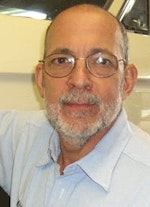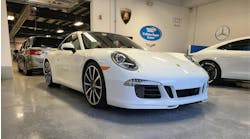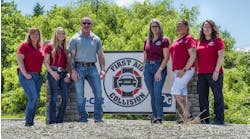What's new? A better question might be: What's the difference? And not "what's the difference" as in what difference does it make, but "what's the difference" as in what is different today than what we experienced yesterday?
Sound a little too philosophical? I don't think so. I've been doing this for almost 40 years, and I believe the question is not only legitimate, but it is critical — especially in light of everything new that's come down the automotive service super highway since I first started pumping gas and professionally twisting wrenches in the spring of 1966.
Almost everything has changed, at least insofar as the technology is concerned. And yet you would have to search diligently for comparable sociological or economic change.
I know. I started my career as a writer with a presentation delivered to the Equipment & Tool Institute in September 1984. That speech, a kind of State of the Industry message from someone living the State of the Industry every day, cataloged a multitude of problems, not the least of which was the impending shortage of trained and qualified automotive service technicians looming on the horizon.
It was an ambitious undertaking for a 38-year-old "kid" who had never been out of the shop for anything even remotely close to a 500-mile trip to Napa Valley to address a group of the industry's most influential leaders. If I had known who was going to be there or what I was getting myself into, odds are you wouldn't recognize my name or be reading this now because I'd still be under a car somewhere. But, frankly, I didn't really care. You see, I had already experienced all of what this industry had to offer and decided it wasn't enough.
Now, more than 20 years later, I'm still here...and so are most of the problems I spoke about.
Why am I still here? I'd be lying if I told you I haven't asked myself the same question 100 times, but I do have an answer: to make a difference, to create change, to act as a positive force in an industry desperately in need of powerful change.
I discussed things in that first speech that everyone knew, but no one ever talked about. People listened, and because they listened, I had the opportunity to speak to the industry again...and again. While I was speaking and thinking and wondering about why things were the way they were, I started to wonder why they couldn't be different. Somewhere along the way, it occurred to me they could be, but only if people started doing more than just think about the things I was talking about.
I've spent the last two decades trying to overcome the inertia of rest, trying to put a dent in the status quo. I've worked diligently to ensure that when someone asks, "What's new?" we could point to something different, something powerful and positive. I've tried to remind anyone who would listen, and that includes you, that we are all passengers on the same leaky boat confronting the same difficult questions.
When you think about it, they're all simple questions, really. Simple questions with profound implications: questions that demand a whole new set of answers and maybe even a little action. If you answer them with the right kind of actions, you just might have something new and exciting to say the next time someone like me asks someone like you, "So, what's new?"
Mitch Schneider is co-owner of Schneider's Auto Repair, Inc., Simi Valley, Calif., and is an ASE Master Technician.



